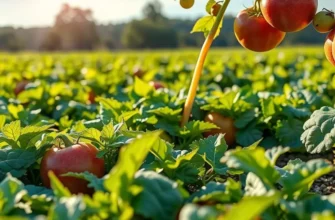Every household manages food, but not all do so efficiently. Learning to control portions not only helps you eat appropriately but also plays a crucial role in minimizing waste. By implementing simple strategies for portion control and food management, you can make a significant difference in your kitchen and contribute to a sustainable lifestyle. This guide provides practical tips on smart food storage solutions and meal planning to ensure you get the most out of your groceries while reducing waste effectively.
Understanding Portion Control: The Basics

Portion control is an essential practice that plays a significant role in reducing food waste at home. It involves serving and consuming the right amount of food according to individual needs and aiming to minimize excess. Embracing portion control helps not only in managing a healthier diet but also in cutting down on the leftovers that often find their way to the trash.
The importance of portion control extends beyond mere dietary benefits. By ensuring you only prepare what you actually intend to eat, you contribute to significant reductions in food waste. This practice becomes particularly valuable in understanding how food waste impacts the environment and society. Implementing smart portion control strategies in your daily routine can lead to positive ecological effects through lessened greenhouse gases emitted from decomposing food waste.
Estimating portion sizes effectively requires practice and mindfulness. Start by familiarizing yourself with standard serving sizes through visual comparisons. For instance, a portion of chicken breast is approximately the size of a deck of cards, while a single serving of pasta fits neatly into a cupped hand. These visual aids can help you gauge appropriate amounts when cooking and serving meals.
Several methods can assist you to integrate portion control seamlessly into your lifestyle. Using smaller plates and bowls can trick your mind into perceiving a filled plate, limiting the tendency to over-serve. Alternatively, pre-portioning snacks and ingredients into containers as soon as you bring them home from the store can make a big difference. This encourages you to consume only what is necessary at any given time, helping regulate food intake and waste concurrently.
Adjusting cooking practices to suit your lifestyle also plays a vital role in curbing waste. Begin by planning meals strategically throughout the week. Consider batch cooking but be mindful of quantities. Store part of what you cook in freezer-safe containers for consumption at a later date, simultaneously addressing portion control and efficient food storage.
Moreover, thoughtful meal planning can aid in understanding the balance needed in your pantry. You can explore practical ingredient batching techniques to streamline cooking processes and maintain portion control effortlessly. Utilizing leftovers wisely is another component of this practice. This ensures nothing goes to waste, and it encourages creativity in meal preparation.
If portion control is all about mindfulness and planning, integrating this mindset across your daily routine leads to healthier portions and less food waste. By deliberately choosing portion sizes that align with your nutritional needs and lifestyle, you embrace a practical approach that harmonizes with mindful eating principles. For more insights on addressing unconscious eating habits, you might find the strategies outlined in this guide useful.
Ultimately, mastering portion control is a vital component of reducing food waste, promoting sustainability, and empowering positive dietary habits. Each small measure you adopt contributes significantly to curbing the global issue of food waste.
Smart Storage Solutions for Leftovers and Ingredients

Implementing effective strategies for food storage can significantly extend the life of your ingredients and leftovers. A well-organized kitchen not only minimizes waste but also makes meal preparation far more efficient. Start with the basics: invest in quality containers with secure lids to prevent spills and preserve freshness. Glass containers are preferable as they do not absorb odors and can withstand high temperatures.
Maximize the usable life of your produce by utilizing the crisper drawers in your fridge. Adjust the humidity settings to match your produce requirements—high for leafy greens and low for fruit. This simple adjustment can prevent premature spoilage. Additionally, be mindful of refrigerator zones; meat should be stored on the bottom shelf to avoid cross-contamination, while leftovers should be visible and accessible to avoid being forgotten.
Labeling plays a crucial role in smart storage. Use removable labels or masking tape to note the date and content of each container. This practice not only helps in maintaining freshness but also aids in meal planning, making it easier to decide which items should be consumed first. Align your storage schedule with a regular cleanup routine to ensure expired foods are discarded promptly.
Freezing food is another effective method to cut down on waste. When freezing, use airtight bags and remove as much air as possible before sealing. This prevents freezer burn and maintains the texture of your food. Note, however, that not all foods freeze well; be sure to research best practices for specific items.
For dry goods, consider investing in a set of stackable containers to save space and maintain organization. Opt for containers with airtight seals to keep pests at bay and ensure items like flour, grains, and snacks remain fresh. Proper storage also encompasses effective portion control. Use measuring cups and kitchen scales to divide ingredients into meal-sized portions before storing. This not only aids in avoiding overconsumption but also simplifies meal preparation.
For more ideas on sustainable storage practices, explore our guide on eco-smart kitchen storage, which provides more eco-friendly solutions. Employing these smart storage solutions thoughtfully contributes to overall waste reduction and promotes a more sustainable kitchen environment. By making small adjustments, you can drastically improve your food management and extend the shelf life of your groceries, ultimately saving money and resources.
Final words
Adopting portion control and effective food storage practices not only enhances your kitchen experience but significantly reduces food waste. By understanding how to estimate portion sizes, you lessen the likelihood of leftovers piling up unnecessarily. Moreover, exploring smart storage solutions helps preserve food for longer periods, allowing you to maintain freshness while minimizing waste. Remember, every small effort counts in the fight against food waste. Create a routine that prioritizes these strategies, and you’ll contribute to a more sustainable and efficient kitchen environment while enjoying your meals guilt-free.







